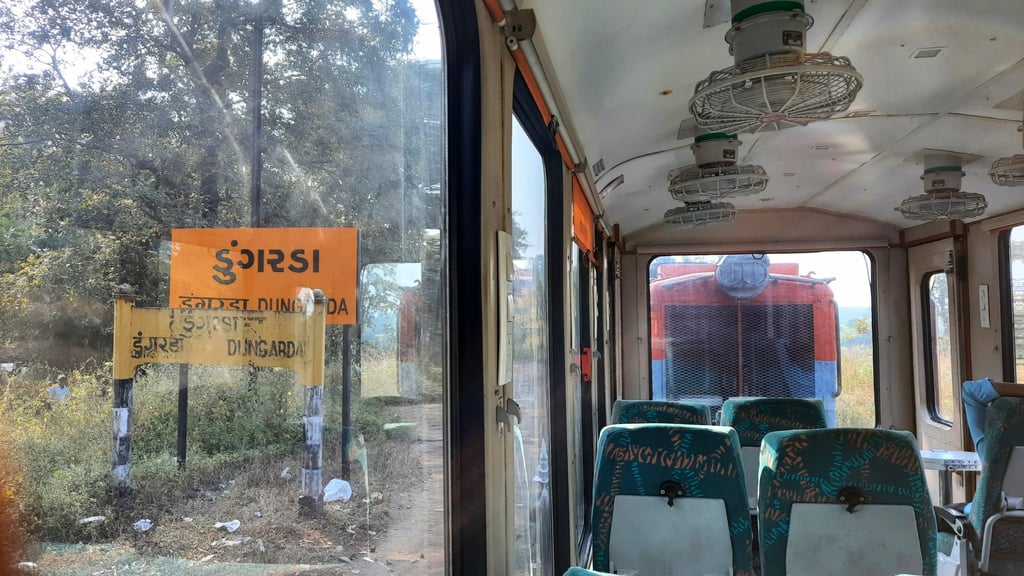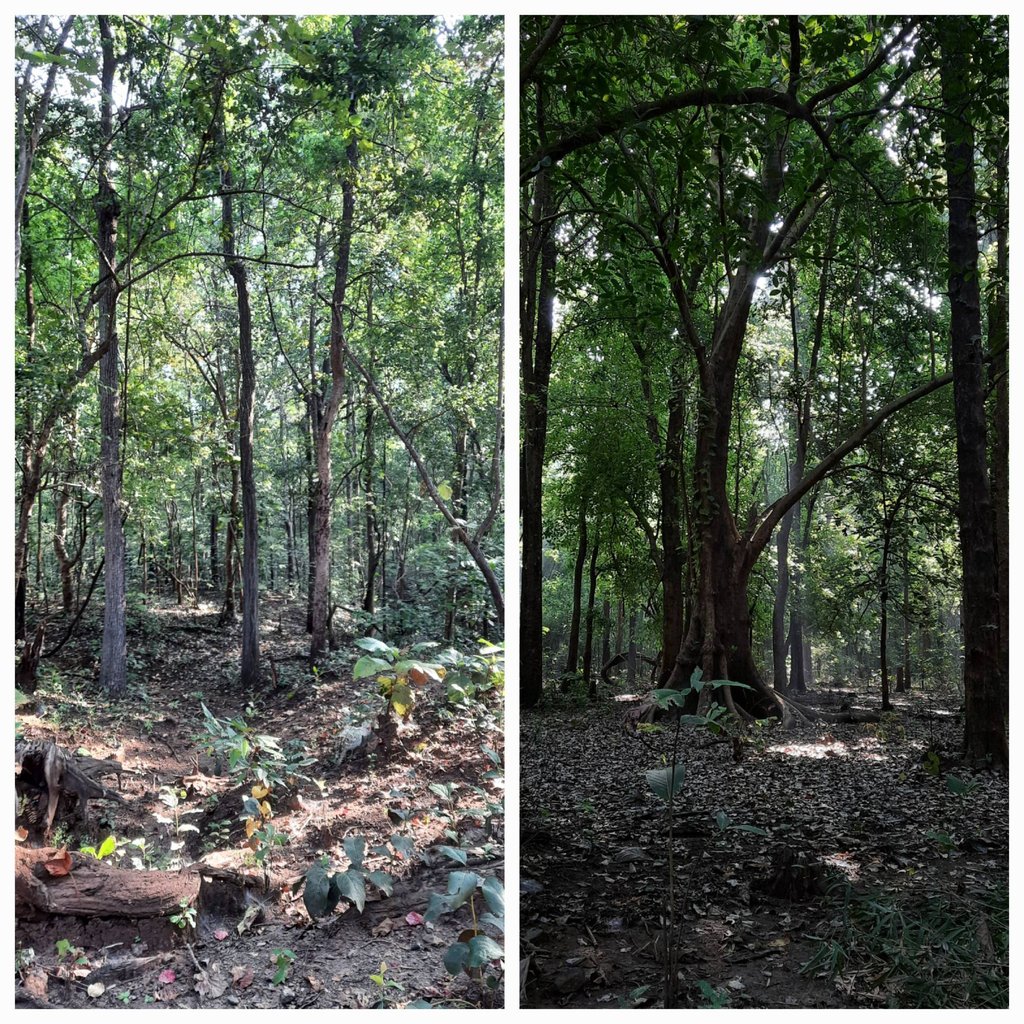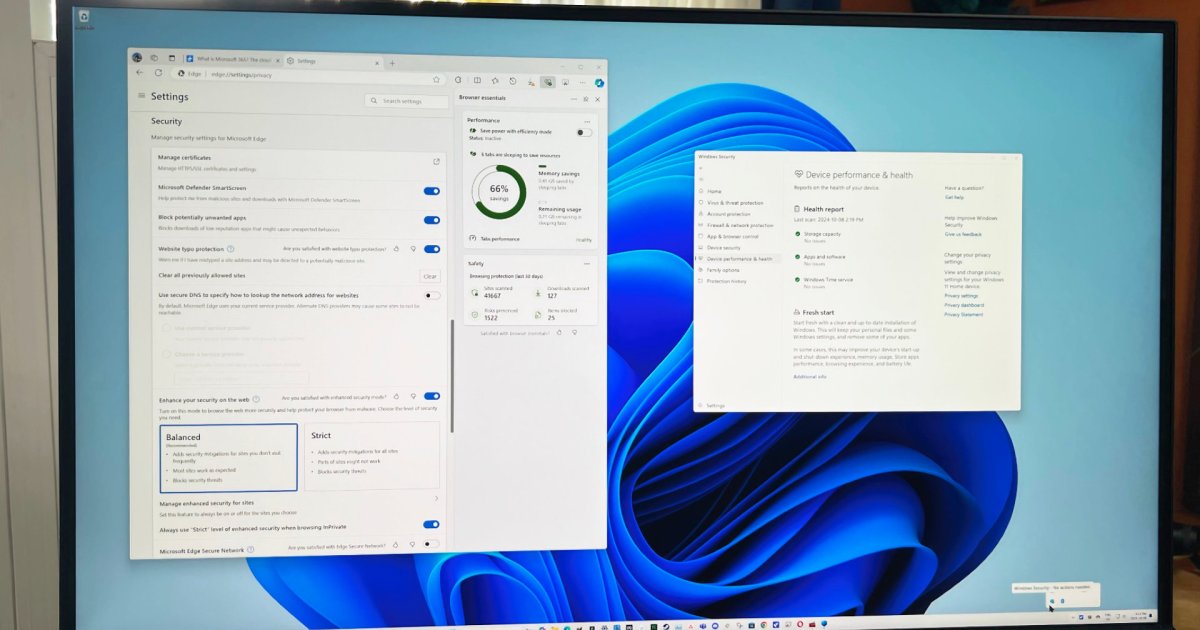The coach has giant glass windows that provide unhindered views of its surroundings. It also has plush seats and is air conditioned; the other carriages have no air conditioning, slatted wooden seats and open windows.
A few more toots and the NG Mix Passenger Special train slowly chugs out of Waghai station, bound for Bilimora. (NG refers to “narrow gauge”, where the track width is less than a metre; India has only a handful of such lines and almost all have heritage or tourist status.)
This line is more than a century old. In 1913, the ruling British laid 63km (39 miles) of track to connect Waghai with the town of Bilimora at the request of the Gaekwad dynasty which ruled the then princely state of Baroda. It was used mainly to transport goods, especially teak, from the forests around Waghai.
After Indian independence, in 1947, the line became part of Indian Railways and primarily ferried passengers. Usage gradually dropped and the line was closed in 2020. However, local activism emphasising the scenic beauty of a portion of the journey ensured it reopened a year later.
As the train picks up speed, Waghai slips away and is replaced briefly by farms and fields, and then dense forest. The train falls into a soothing clickety-clack rhythm, the carriage swaying from side to side, and the scene on either side alternates between towering trees, thick shrubbery, meadows and bodies of water.
Although the whole journey takes around three hours, it is only the first hour – until Unai station – that is scenic, passing through almost entirely forested areas.

No sooner does the train pick up speed than it begins slowing down again, chugging to a stop in Dungarda village. A handful of people get on.
Soon after leaving Dungarda, the train rounds a bend to reveal possibly the journey’s most spectacular sight.
We cross a bridge that stands on massive stone pillars high above the Ambika, a river that flows gently around boulders and clumps of greenery. On either side, the river stretches to the horizon like a blue ribbon.
A substantial part of the forest that the train passes through belongs to Vansda National Park, which is almost at the beginning of the Western Ghats, a 1,600km-long mountain range that runs along India’s west coast. The mountains are a biodiversity hotspot and one of the country’s major watersheds.
Once the hunting grounds of royalty, the park is just 24 square kilometres (9 square miles) in size. But a royal diktat in 1952 banned tree felling, so some of the park’s trees are older than 100 years, making it a precious resource.

Apart from giant rosewood, Indian rosewood, teak and bamboo, the park is known for an unusual abundance of thick and winding clusters of vines that form eerie canopies.
All of this serves as a good habitat for scores of animal, bird, insect and reptile species, but its biggest claim to fame is that the park is one of only a handful of places that is home to the endangered forest owlet – estimated population: less than 1,000 – an adorable greyish-brown bird that was once thought to be extinct.
Sadly, the forest owlet is also extremely shy and unlikely to frequent the train route. And owing to the density of the greenery, it is difficult to spot much other wildlife, even on safaris or walking tours.
Nevertheless, the park’s reputation as a haven for birds is reinforced on the train journey: cattle egrets are easily sighted, usually on the outskirts of villages, and a common kingfisher, with its striking turquoise coat, flits across under the watchful gaze of black drongos.
I get fleeting glimpses of red-whiskered bulbuls, sparrows and bee-eaters, and perched high on a bare tree is a buzzard. A resplendent peacock nonchalantly struts through an opening amid thick bushes.
I also catch sight of tribal forest deities called Vagdev, sets of vertical stones or wooden planks. Each is carved with five colourful figures – the sun and moon on top (celestial beings), followed by a tiger or leopard (king of the forest), a peacock (rain and prosperity) and finally a snake (protection).

And so the journey continues, passing through villages – where children pause their games, mostly cricket, to wave – and fields of rice and sugar cane, achieving a top speed of 40km/h.
But for the most part, it is just jungle, through which the NG Mix Passenger Special trundles at no more than 20km/h.







